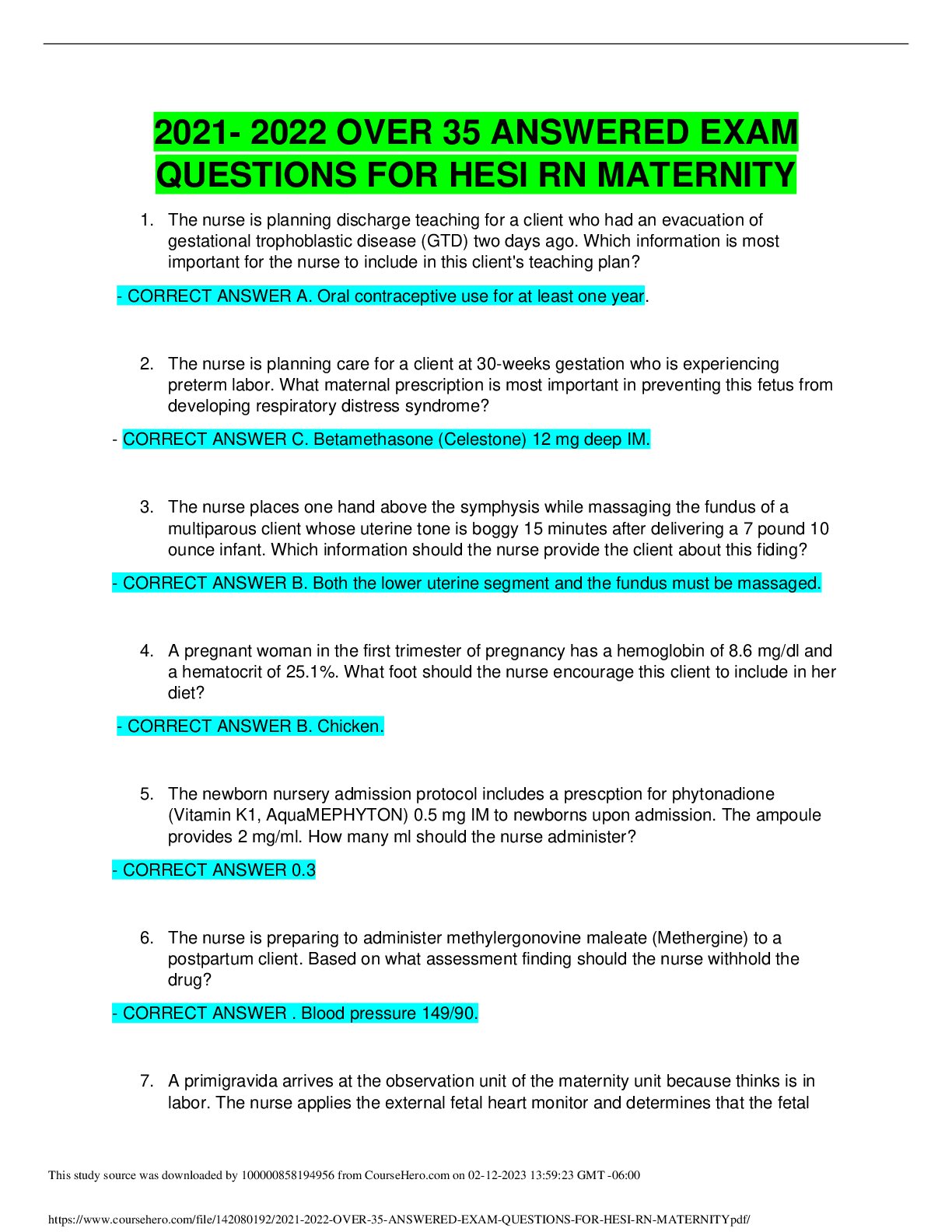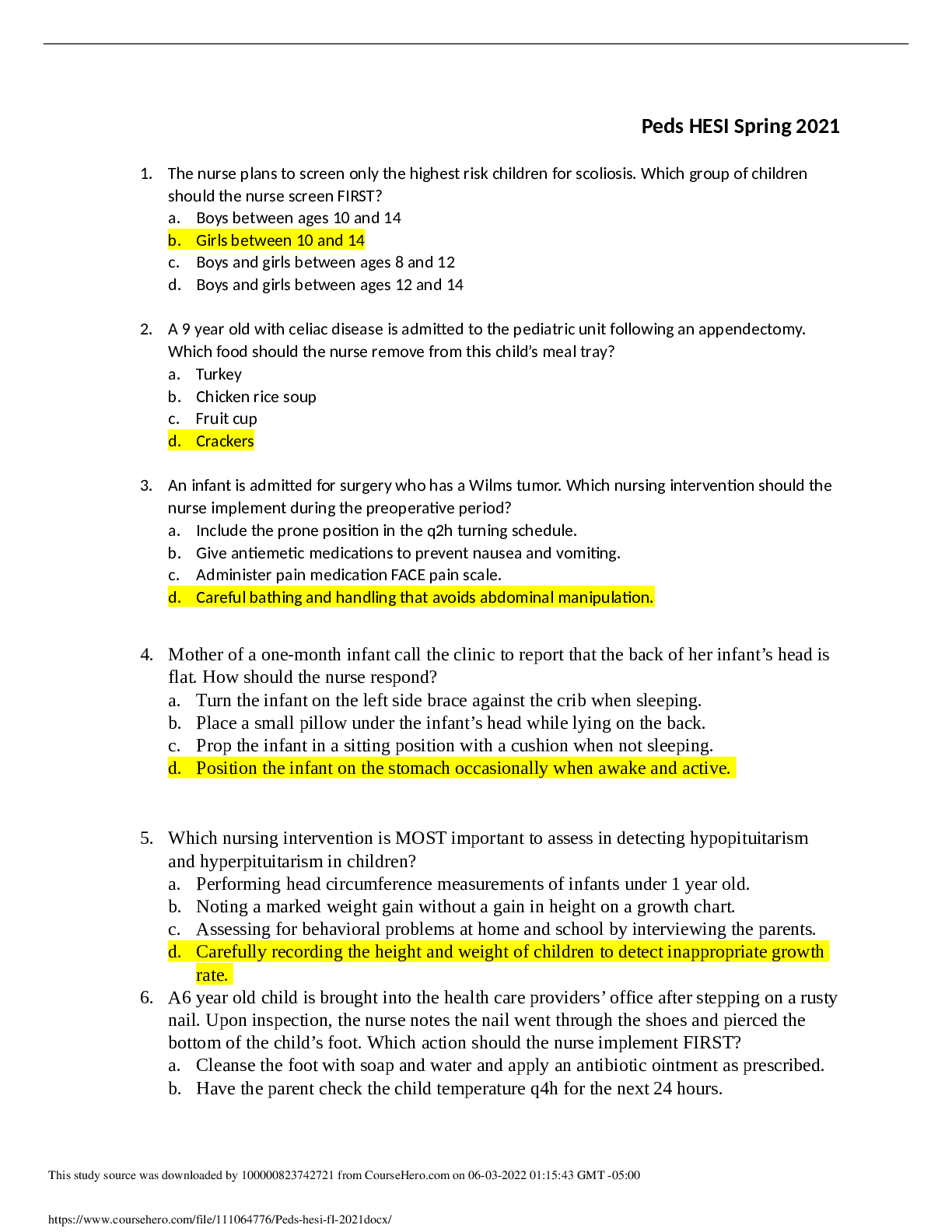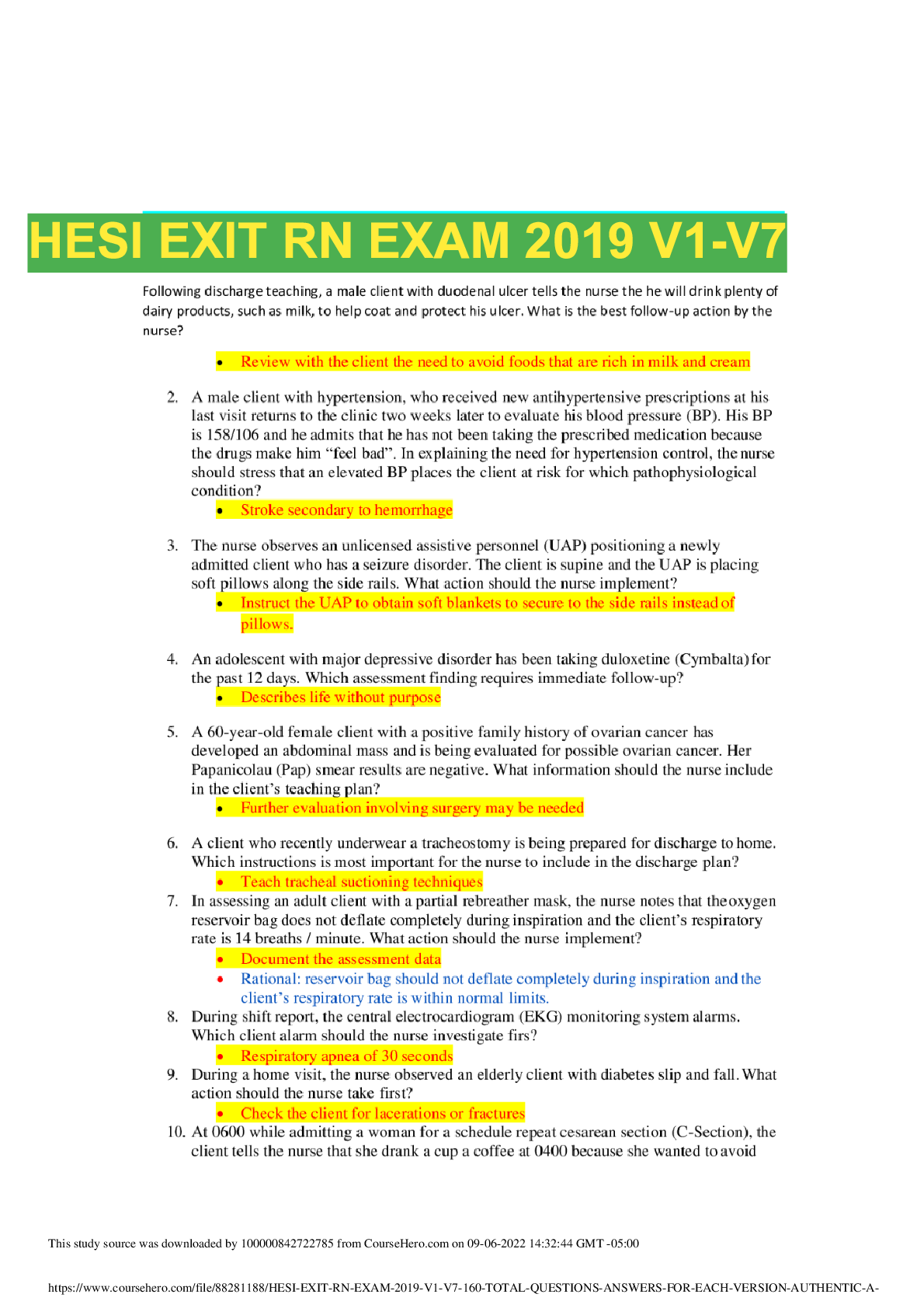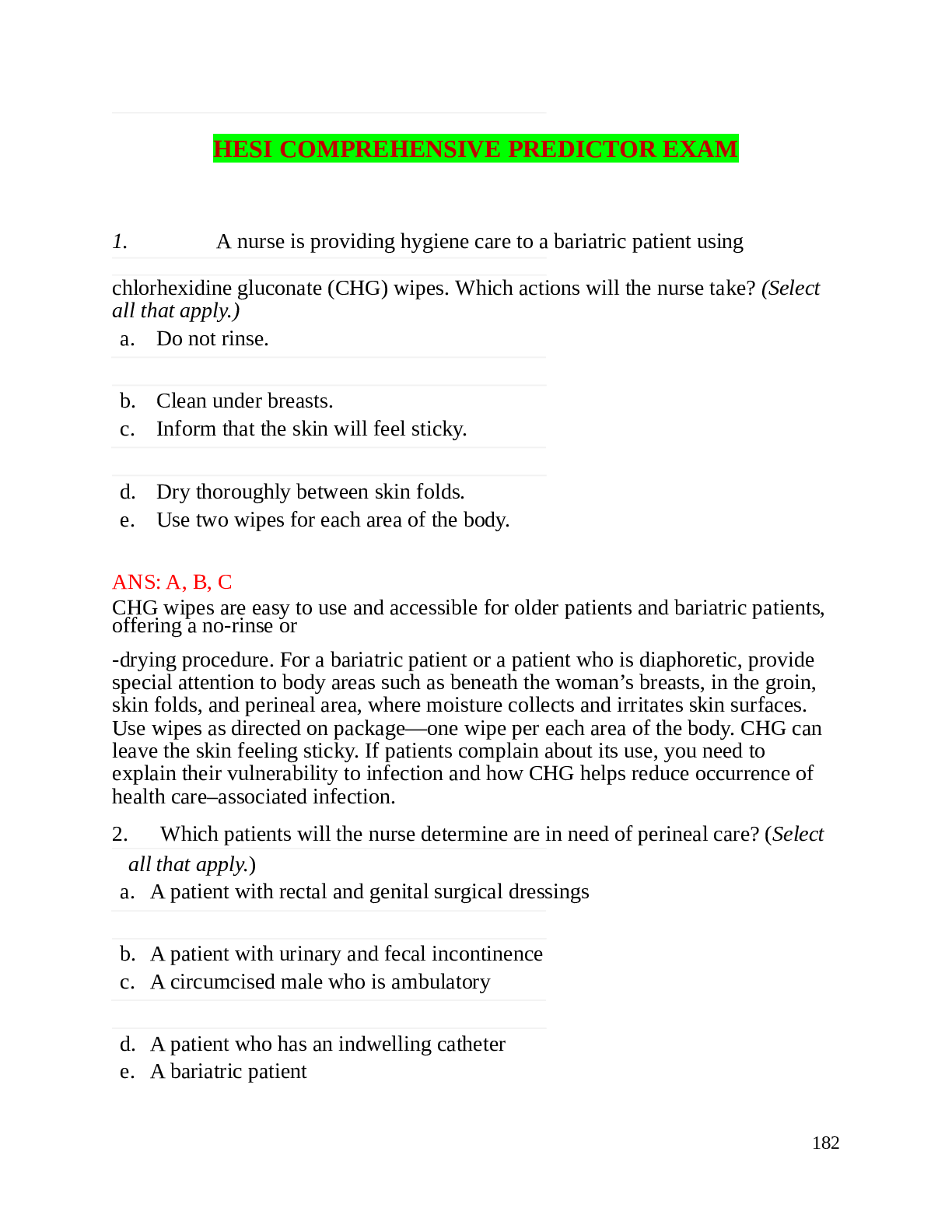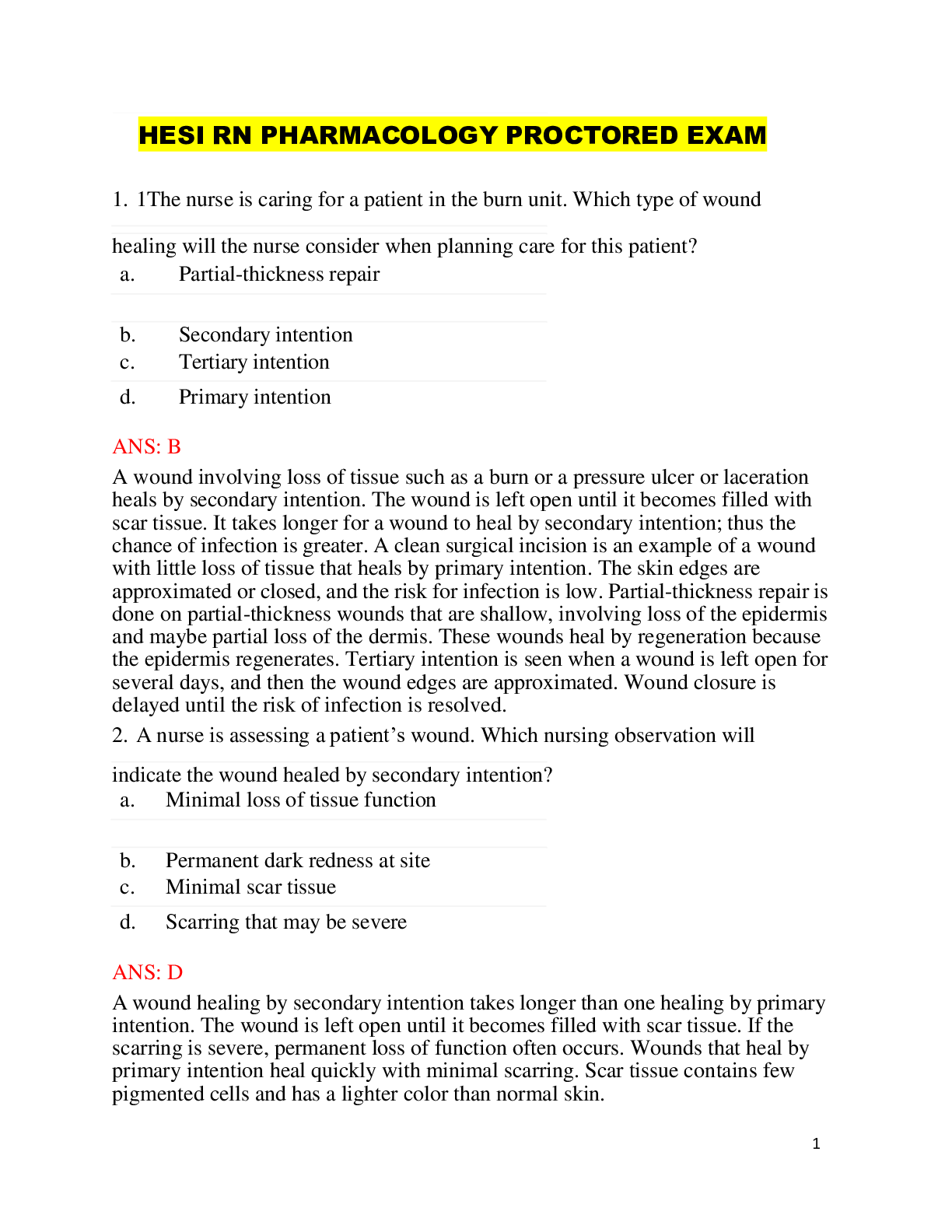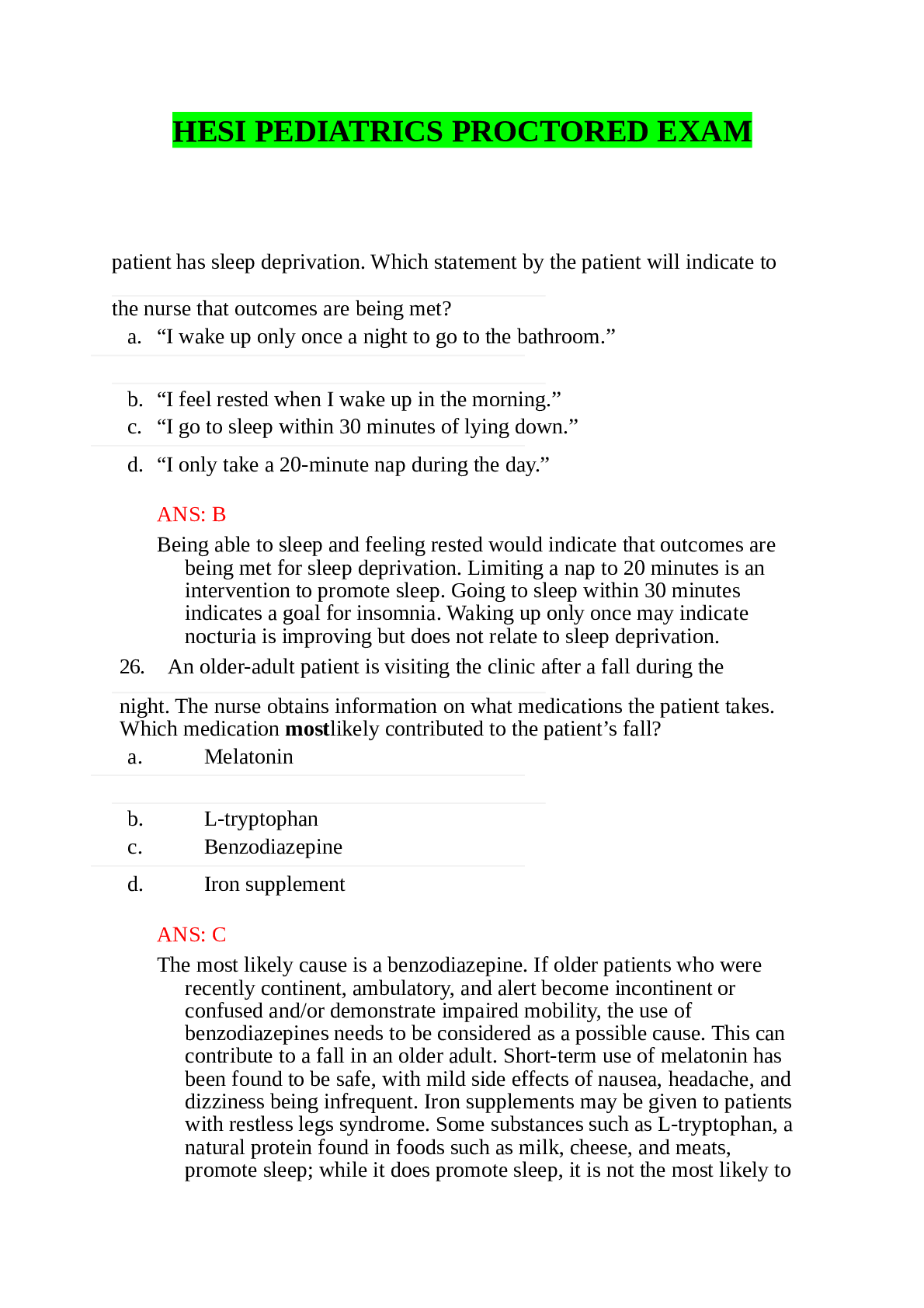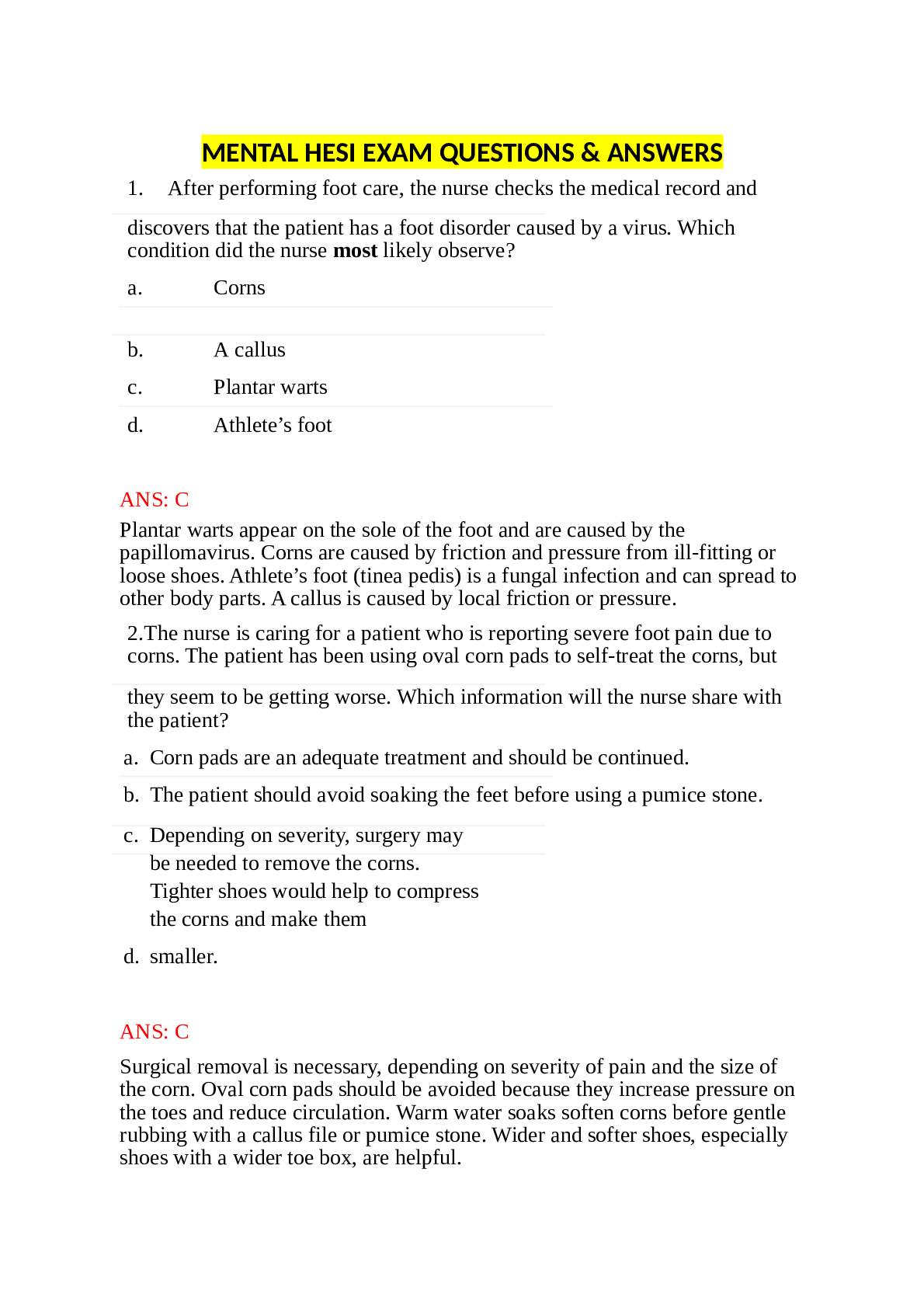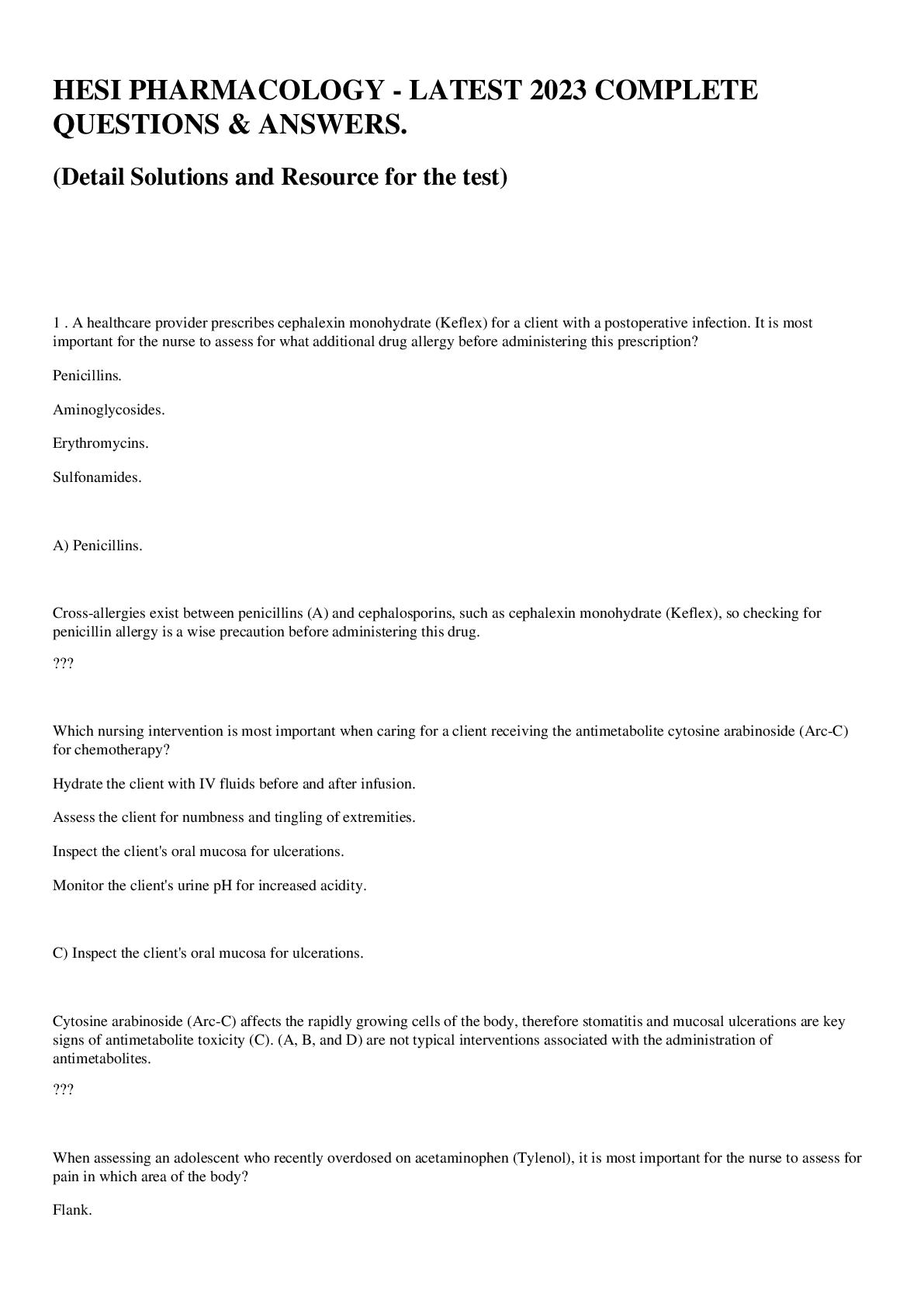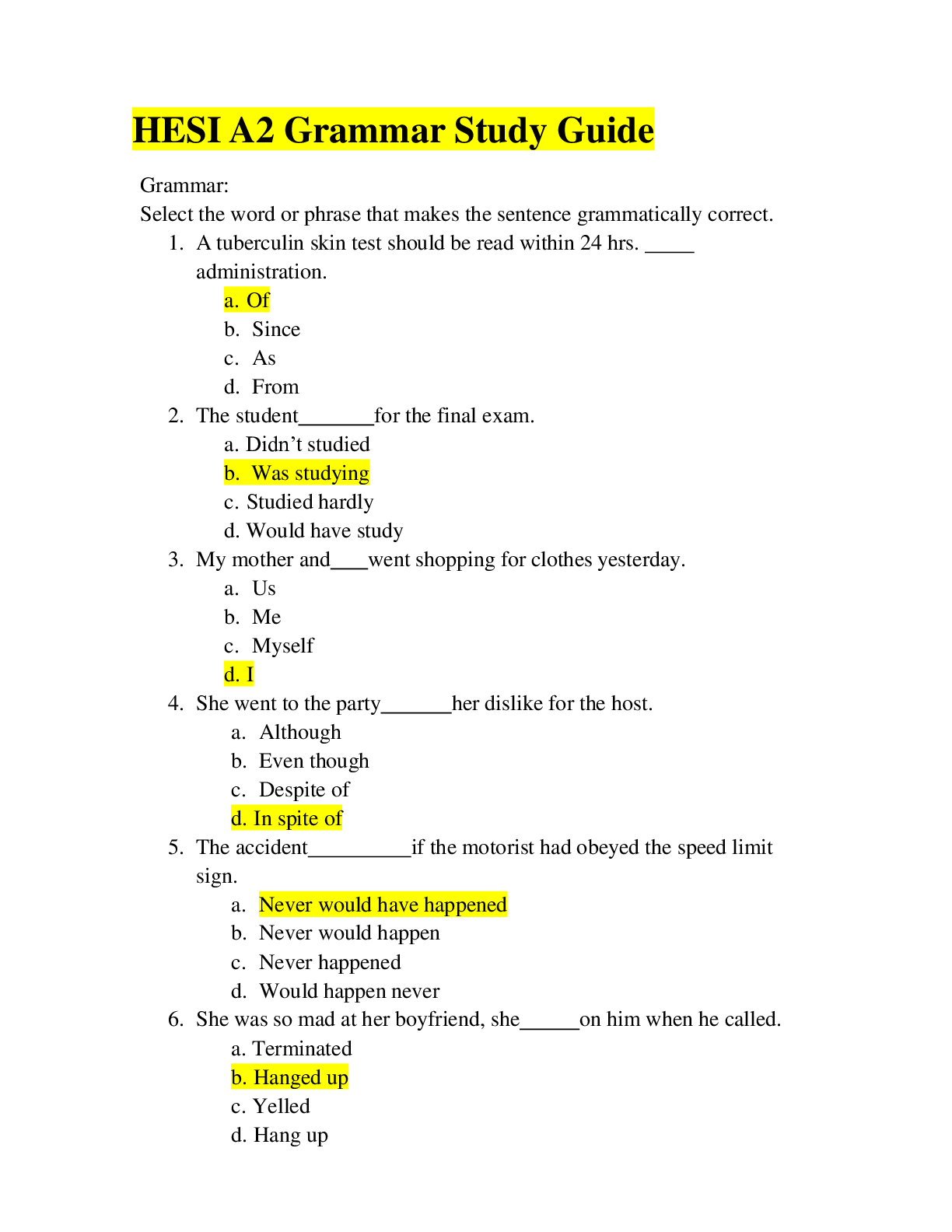Health Care > HESI > HESI EXIT EXAM- LATEST 2021 COMPLETE QUESTIONS & ANSWERS (All)
HESI EXIT EXAM- LATEST 2021 COMPLETE QUESTIONS & ANSWERS
Document Content and Description Below
A nurse is evaluating care of an immobilized patient. Which action will the nurse take? a. Focus on whether the interdisciplinary team is satisfied with the care. Compare the patient’s actual out... comes with the outcomes in the care b. plan. Involve primarily the patient’s family and health care team to c. determine goal achievement. Use objective data solely in determining whether interventions have d. been successful. ANS: B From your perspective as the nurse, you are to evaluate outcomes and response to nursing care and compare the patient’s actual outcomes with the outcomes selected during planning. Ask if the patient’s expectations (subjective data) of care are being met, and use objective data to determine the success of interventions. Just as it was important to include the patient during the assessment and planning phase of the care plan, it is essential to have the patient’s evaluation of the plan of care, not just the patient’s family and health care team. 2. A nurse is supervising the logrolling of a patient. To which patient is the nurse most likely providing care? a. A patient with neck surgery b. A patient with hypostatic pneumonia c. A patient with a total knee replacement d. A patient with a Stage IV pressure ulcer ANS: A A nurse supervises and aids personnel when there is a health care provider’s order to logroll a patient. Patients who have suffered from spinal cord injury or are recovering from neck, back, or spinal surgery often need to keep the spinal column in straight alignment to prevent further injury. Hypostatic pneumonia, total knee replacement, and Stage IV ulcers do not have to be logrolled. 3. The nurse is providing teaching to an immobilized patient with impaired skin integrity about diet. Which diet will the nurse recommend? a. High protein, high calorie b. High carbohydrate, low fat c. High vitamin A, high vitamin E d. Fluid restricted, bland ANS: A Because the body needs protein to repair injured tissue and rebuild depleted protein stores, give the immobilized patient a high-protein, high-calorie diet. A high-carbohydrate, low-fat diet is not beneficial for an immobilized patient. Vitamins B and C are needed rather than A and E. Fluid restriction can be detrimental to the immobilized patient; this can lead to dehydration. A bland diet is not necessary for immobilized patients. 4. The nurse is caring for a patient who has had a stroke causing total paralysis of the right side. To help maintain joint function and minimize the disability from contractures, passive ROM will be initiated. When should the nurse begin this therapy? a. After the acute phase of the disease has passed b. As soon as the ability to move is lost c. Once the patient enters the rehab unit d. When the patient requests it ANS: B Passive ROM exercises should begin as soon as the patient’s ability to move the extremity or joint is lost. The nurse should not wait for the acute phase to end. It may be some time before the patient enters the rehab unit or the patient requests it, and contractures could form by then. 5. The nurse is admitting a patient who has been diagnosed as having had a stroke. The health care p [Show More]
Last updated: 2 years ago
Preview 1 out of 14 pages

Buy this document to get the full access instantly
Instant Download Access after purchase
Buy NowInstant download
We Accept:

Reviews( 0 )
$8.00
Can't find what you want? Try our AI powered Search
Document information
Connected school, study & course
About the document
Uploaded On
Jun 27, 2022
Number of pages
14
Written in
Additional information
This document has been written for:
Uploaded
Jun 27, 2022
Downloads
0
Views
73

